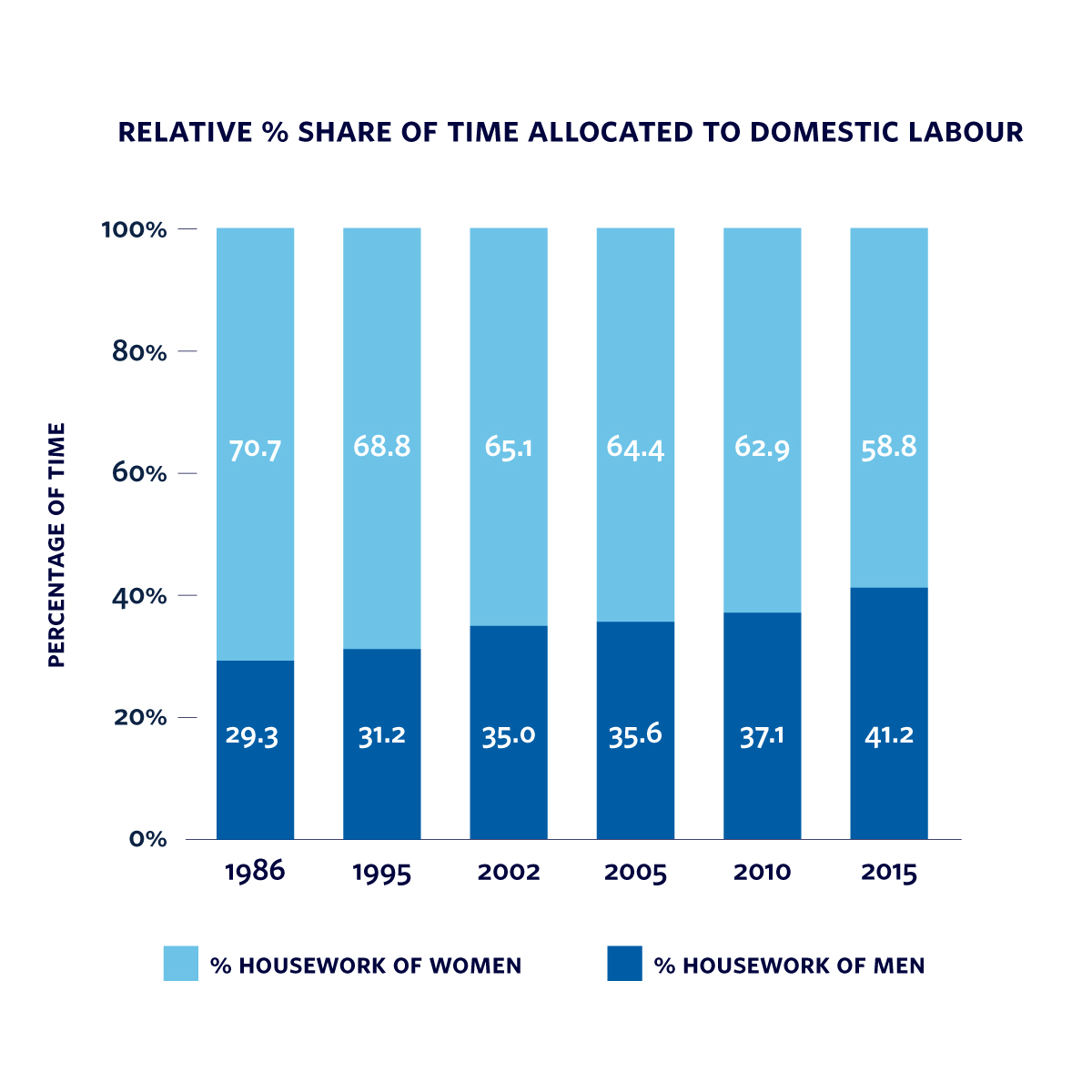Trend toward gender balance in workforce reflected in housekeeping chores
Women’s increasing participation in the workforce since the mid-1980s has helped narrow the gap between the amount of housework being done by men and women, new UBC research suggests.

Women’s increasing participation in the workforce since the mid-1980s has helped narrow the gap between the amount of housework being done by men and women, new UBC research suggests.
Men’s share of housework increased between 1986 and 2015 while women’s decreased. Although women still do most of the domestic work—which includes cooking, cleaning and childcare—the amount of time they spend on it each day is decreasing almost in lockstep with the increase in men’s daily domestic labour.

“Across a number of institutions—the economy, education, the justice system, politics—we know there is greater gender balance now than there used to be,” said UBC sociology professor Neil Guppy, lead author of the study published May 8 in the Canadian Review of Sociology. “What this particular study shows is that this is happening in the household as well. In what you might consider public realms, gender balance has improved, and we’re showing that in the private realm of the household gender balance is also converging.”
For the study, the researchers used data from surveys collected six times between 1986 and 2015. Participants from across Canada diarized their daily activities over a 24-hour period. More than 5,000 people contributed data each time.
That period also saw a dramatic rise in the percentage of women in the workforce, which the researchers have identified as the most likely explanation for the convergence in time spent doing household chores.
The number of daily minutes spent by women on housework dropped by 65 minutes over the 30-year study period, while it rose by 40 minutes for men. In 1986, 33 per cent of men reported doing no housework at all. That number had dropped to 16 per cent by 2015.


Households as a whole are not spending much more time cooking and housekeeping than they were 30 years ago, but men are. Their cooking time rose by about 23 minutes. Men now do about 40 per cent of the cooking.

“When we went into this, we expected that men might have increased their time in cooking, but less so with respect to cleaning and the daily chores of housework that have traditionally been defined as ‘women’s work,’” said co-author Rima Wilkes, a professor of sociology at UBC. “But we found that men are doing more of this traditional work around the house. It’s not all just barbecuing and maintenance, or cooking the occasional meal. We saw change across the board for men in all kinds of household tasks.”
One duty to which both women and men are devoting more time is childcare. Although the average family size has declined, parenting overall seems to have become more intensive. Women increased their time spent on childcare by 27 minutes, bringing it to nearly two hours a day on average. Men’s allocation was 72 minutes per day in 2015, up from 35 minutes in 1986.
In 2015, over 80 per cent of women and 90 per cent of men were in the labour force, which represents a sharp rise for women since 1986 and a small drop for men. On days when women worked outside the home for pay, they saw their housework time drop significantly. Men’s time on household tasks increased markedly on days when they weren’t working for pay.



